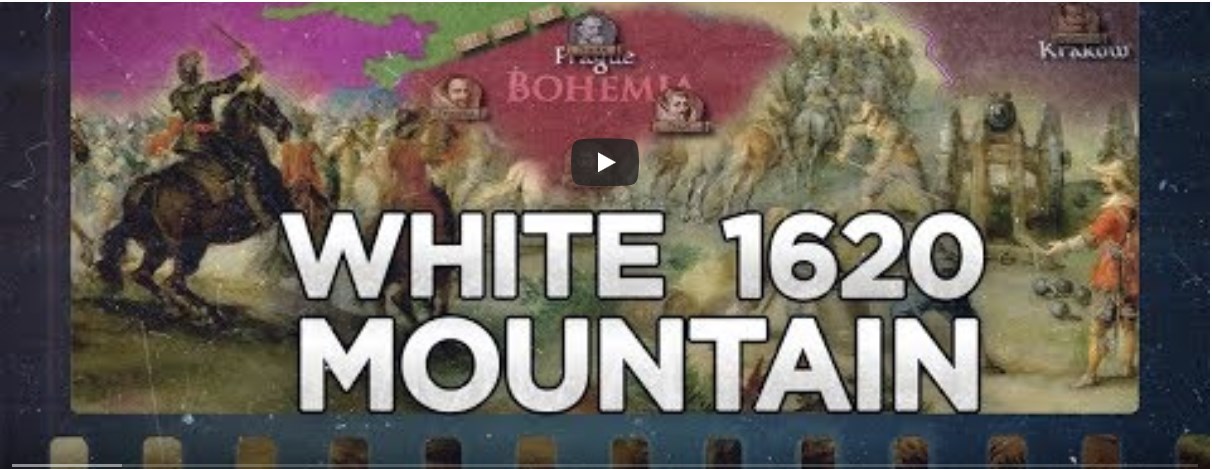
In our news animated historical documentary series we will cover the Thirty Years' War - one of the most bloody conflicts in history, an all-European conflict which often spilled out of the continent. The first phase of this war is known as Bohemian, as the Bohemians were once again at the forefront of the anti-Imperial and anti-Catholic fight. This phase of the conflict concluded in 1620 at the battle of White Mountain, where the allied protestant army led by Count Thurn faced the army of the Habsburgs and their allies led by Count Tilly
Thirty Years' War - White Mountain 1620 DOCUMENTARY

The Thirty Years' War - how was peace achieved? (1/2) | DW Documentary (History documentary)
The Thirty Years' War was a battle for power. But what caused brutal soldiers in Central Europe to finally stop fighting and agree on peace?
Part 2: https://youtu.be/phKnpt_gzVI
Huge battles, famines, the plague and cholera: For 30 years, brutal soldiers and marauding mercenaries turned Central Europe into the first circle of hell as Catholics and Protestants struggled for hegemony. Almost all the European powers had a hand in the bloody conflict, which was finally ended by the Peace of Westphalia in 1648. The first great pan-European conflagration was all about power and religion. About four million people died between 1618 and 1648 in the "German lands” alone. Most of the fighting took place in the territories of the "Holy Roman Empire of the German Nation.” The warring factions agreed on two places for peace negotiations: the first international congress took place in the cities of Münster and Osnabrück in western Germany and lasted five years. Both places become a hotbed of intrigue, secret treaties and shady deals as the envoys negotiated the future of Europe on behalf of their rulers. In fact, the Peace of Westphalia really marked the birth of modern diplomacy. A blend of reenactments, animations, archival research and expert opinion brings the negotiations 370 years ago to life in an exciting two-part documentary and shows how touch-and-go the outcome was right up to the very last moment. _______
DW Documentary gives you knowledge beyond the headlines. Watch high-class documentaries from German broadcasters and international production companies. Meet intriguing people, travel to distant lands, get a look behind the complexities of daily life and build a deeper understanding of current affairs and global events. Subscribe and explore the world around you with DW Documentary.
catholics and protestants killing eachother. like football fans of the SAME club, having a deadly debate about the nickname of the manager. at least, pick different gods, have a "normal" holy war and make a less idiotic impression on future generations.
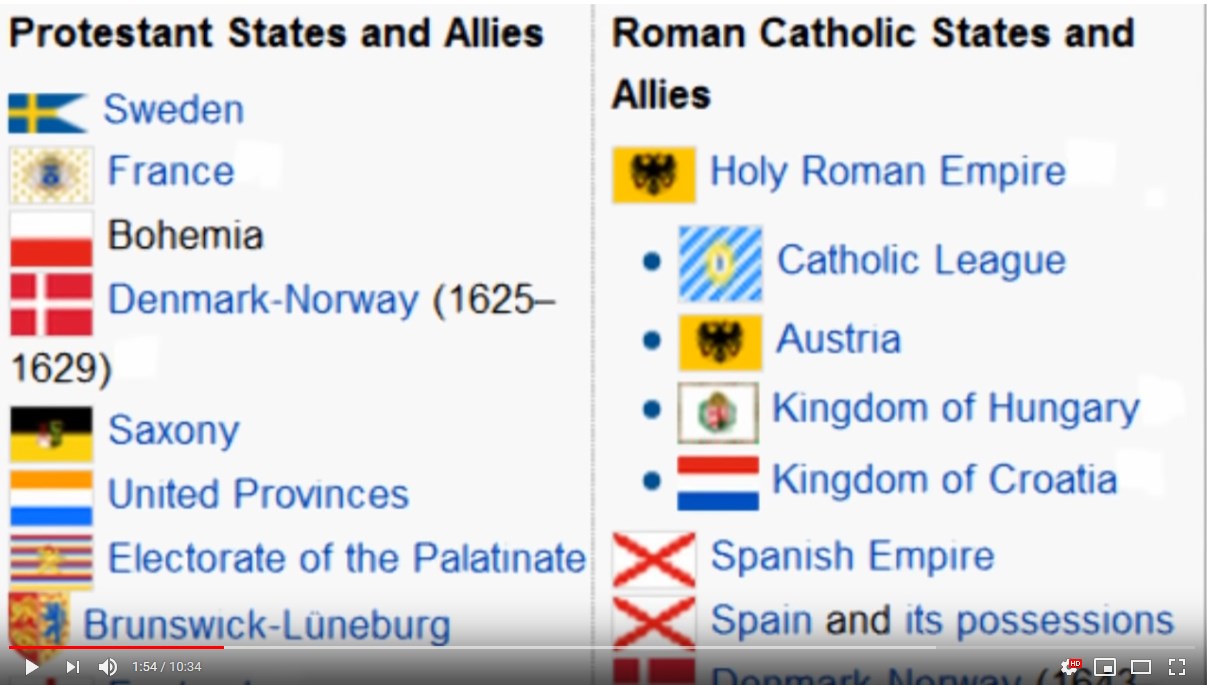
The Thirty Years' War (1618--1648)

The Thirty Years' War - how was peace achieved? (2/2) | DW Documentary (History documentary)
"Huge battles, famines, the plague and cholera: For 30 years, brutal soldiers and marauding mercenaries turned Central Europe into the first circle of hell as Catholics and Protestants struggled for hegemony. Almost all the European powers had a hand in the bloody conflict, which was finally ended by the Peace of Westphalia in 1648. The first great pan-European conflagration was all about power and religion. About four million people died between 1618 and 1648 in the "German lands” alone. Most of the fighting took place in the territories of the "Holy Roman Empire of the German Nation.” The warring factions agreed on two places for peace negotiations: the first international congress took place in the cities of Münster and Osnabrück in western Germany and lasted five years. Both places become a hotbed of intrigue, secret treaties and shady deals as the envoys negotiated the future of Europe on behalf of their rulers. In fact, the Peace of Westphalia really marked the birth of modern diplomacy. A blend of reenactments, animations, archival research and expert opinion brings the negotiations 370 years ago to life in an exciting two-part documentary and shows how touch-and-go the outcome was right up to the very last moment."
Great documentary. Only one slight mistake. At 14:00 it is said that confidence in Ferdinand II is shrinking. But at that time (1645) the emperor Ferdinand II had already died and had been succeeded by his son Ferdinand III, whose portrait is the left one in the back of the room at 8:36 .
I like how this German documentary manages to cram some modern propaganda down the throats of the listeners about the EU. The Treaty of Westphalia was the foundation of the nation-state model (One nation for one people). The modern EU is seeking to tear down this model and replace it with a globalistic new order based on nothing but the interests of the economic elite with no respect for the individual peoples and cultures that are forced to live under these corporate elites.
interesting that this massive religious war started at the same time as the first newspapers
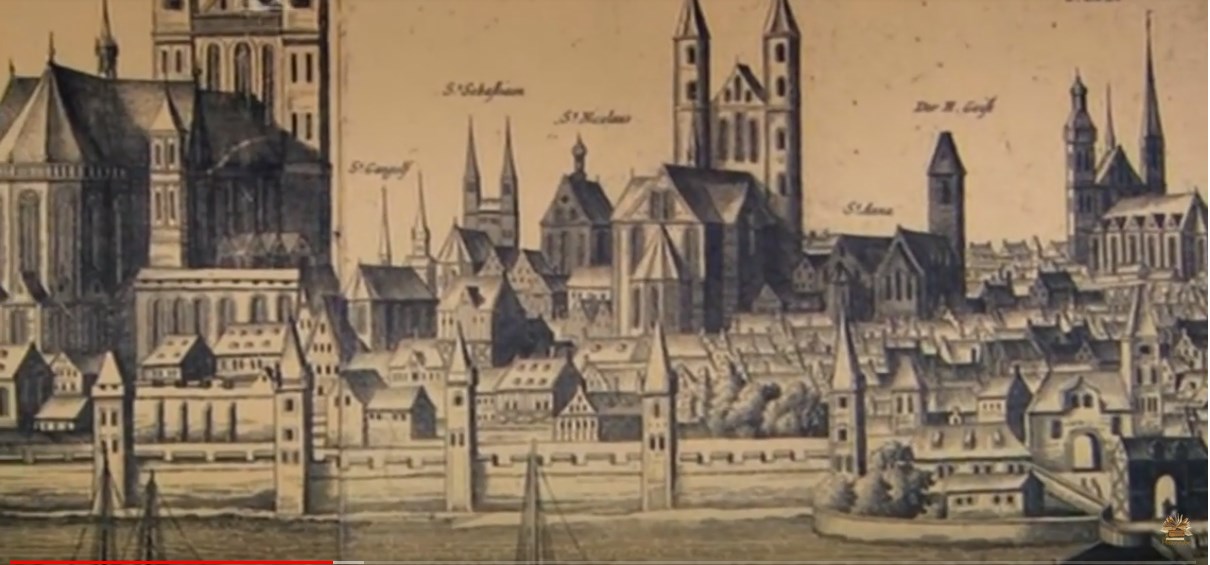
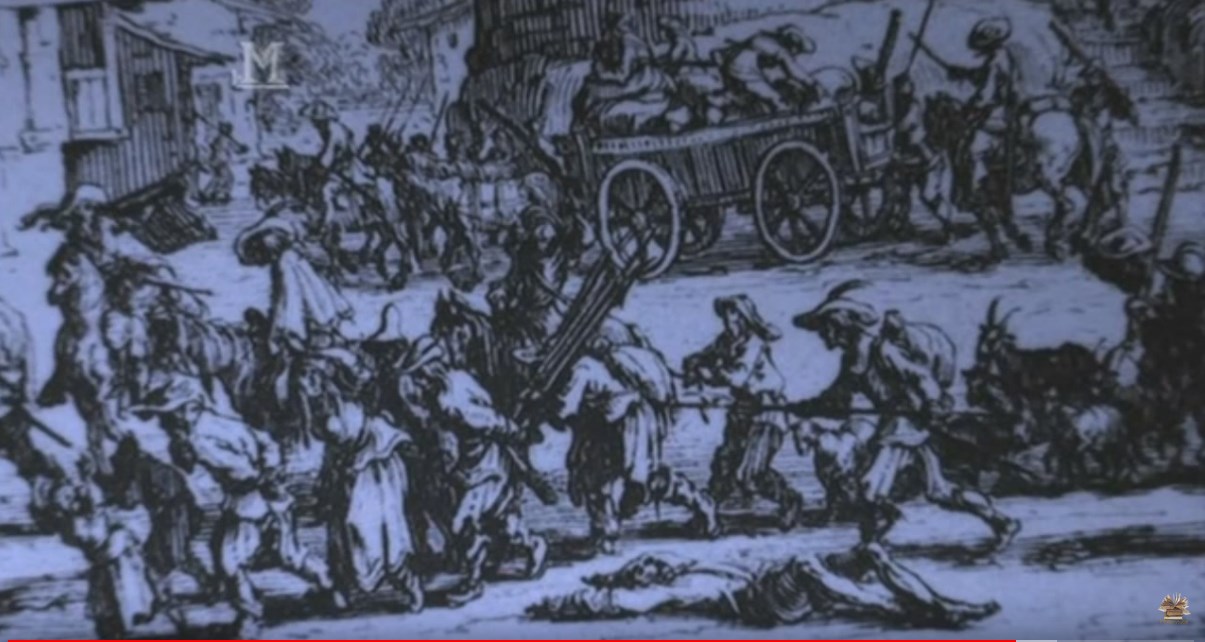
Surviving the Battle 1631 - The Sack of Magdeburg
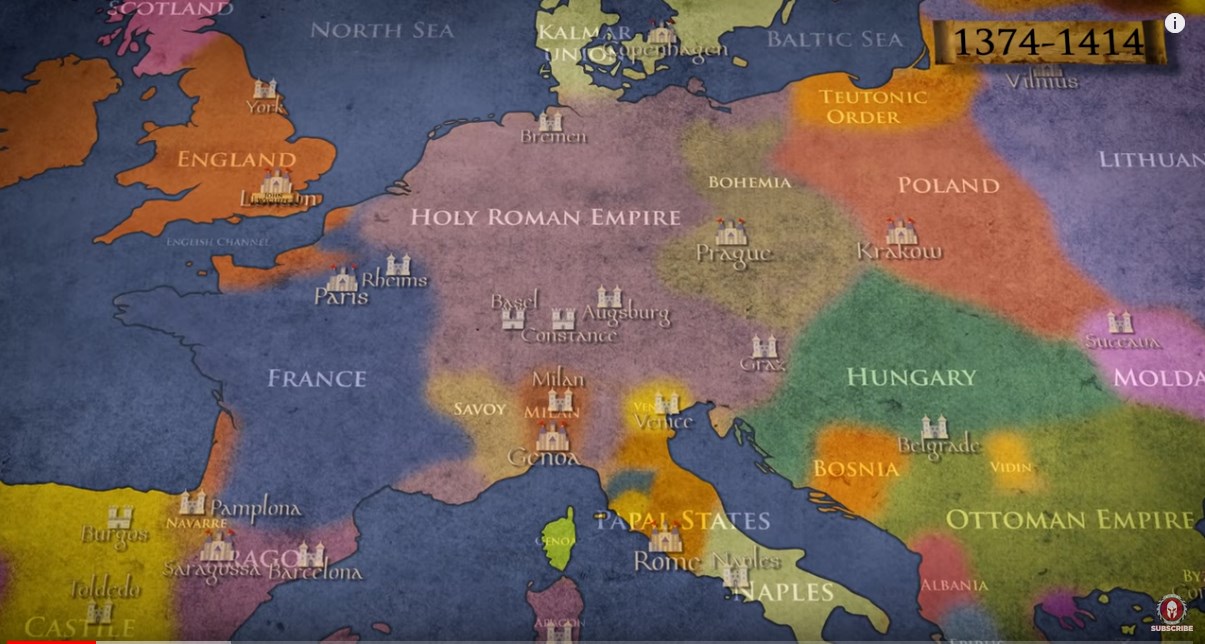
https://www.youtube.com/watch?v=2ZQwkX3euFg
Although the Catholic Church and the Pope had a dominant presence in the European politics, they were not unchallenged and the Western Schism allowed many movements to arise in Europe. The works of the English philosopher and theologian John Wycliffe influenced many, among them Jan Hus of Bohemia. His supporters- the Hussites soon took over the country and kept the whole of Central Europe in fear for 15 years. Five Crusades were conducted against them, led by the Hungarian king Sigismund I, but the Taborites under Jan Zizka (Žižka) won many battles (Vitkov Hill, Kutna Hora, Vysehrad, and others) using their famous Wagenburg tactics. The Hussites were only defeated at the battle of Lipany (1434) when two main groups within the movement (Taborites and Utraquists) faced each other. The Hussite Wars were important, as they became the harbinger of the Reformation and the European Wars of Religion.
No wonder the Ottomans expanded deep into Europe. Europeans were busy trying to prove which version of Christianity was best.
Interesting thing: A lot of Hussites were just farmers etc., so the usually used weapons were pichtfork, scythe or just long stick with iron top (otherwise used for beating crops), this arsenal allowed to reach from behind the wagons to the enemy whos were usually knight with shorter weapons like swords, axes and so on...
Oh medieval Popes, when will you stop fighting over who's pope and actually do your job and be a good Christian?
Some of the biggest massacres and genocides in human history were committed during this period in Europe. Christian against Christian. Yet it is hardly ever taught in history.
I heard that the Hussites, by singing their war chant, "Ktož jsú boží bojovníci", or in English, "Ye Who Are Warriors of God", in such a ferocity that it was like a weapon itself and with it were often able to scare away Crusader forces with little to no fighting. It was sung after the Hussite charge in Vitkov Hill, and it helped destroy Crusader morale. Also the Taborites experimented with what we can call proto-communism, their radicalization even driving away their leader Jan Zizka.
All of these people worship the same Christian god, just in slightly(I am obviously glossing over the intricacies of each religion and sect)different ways, but slaughter each other because???...just because ??♂️??♂️

